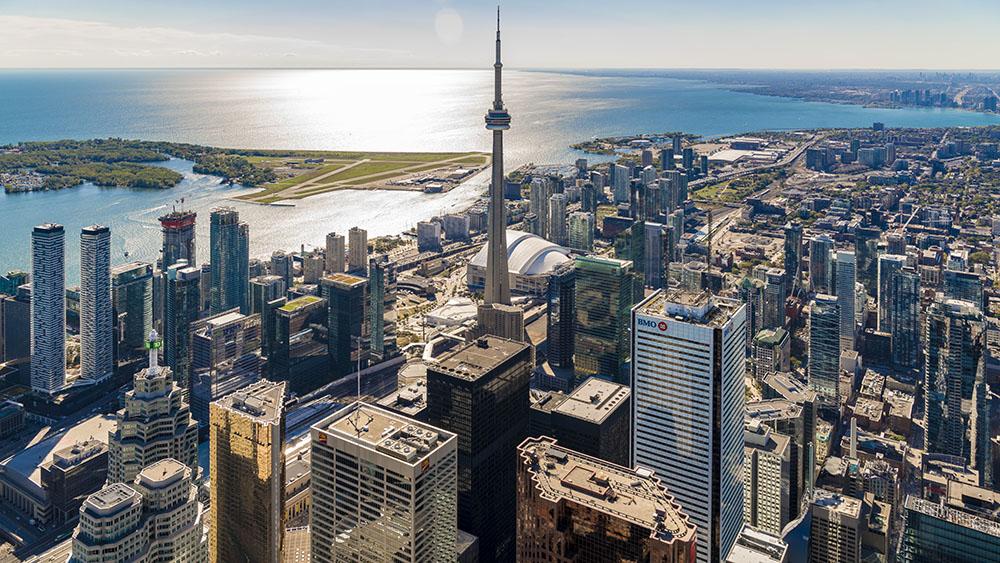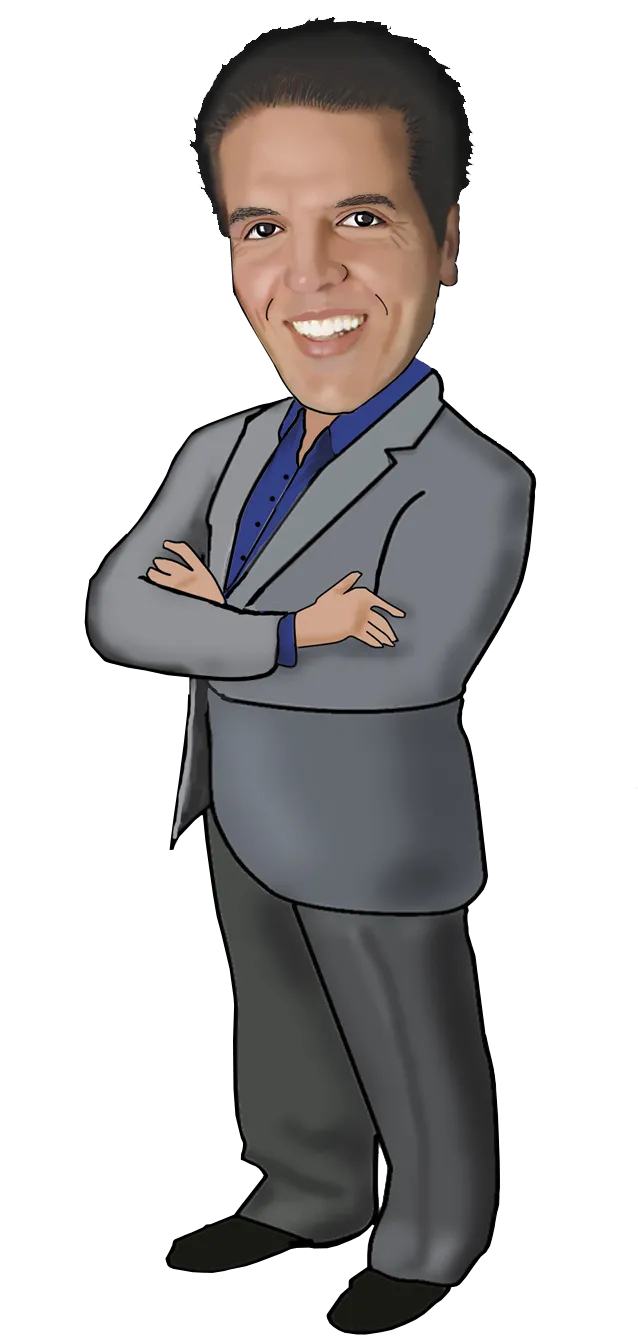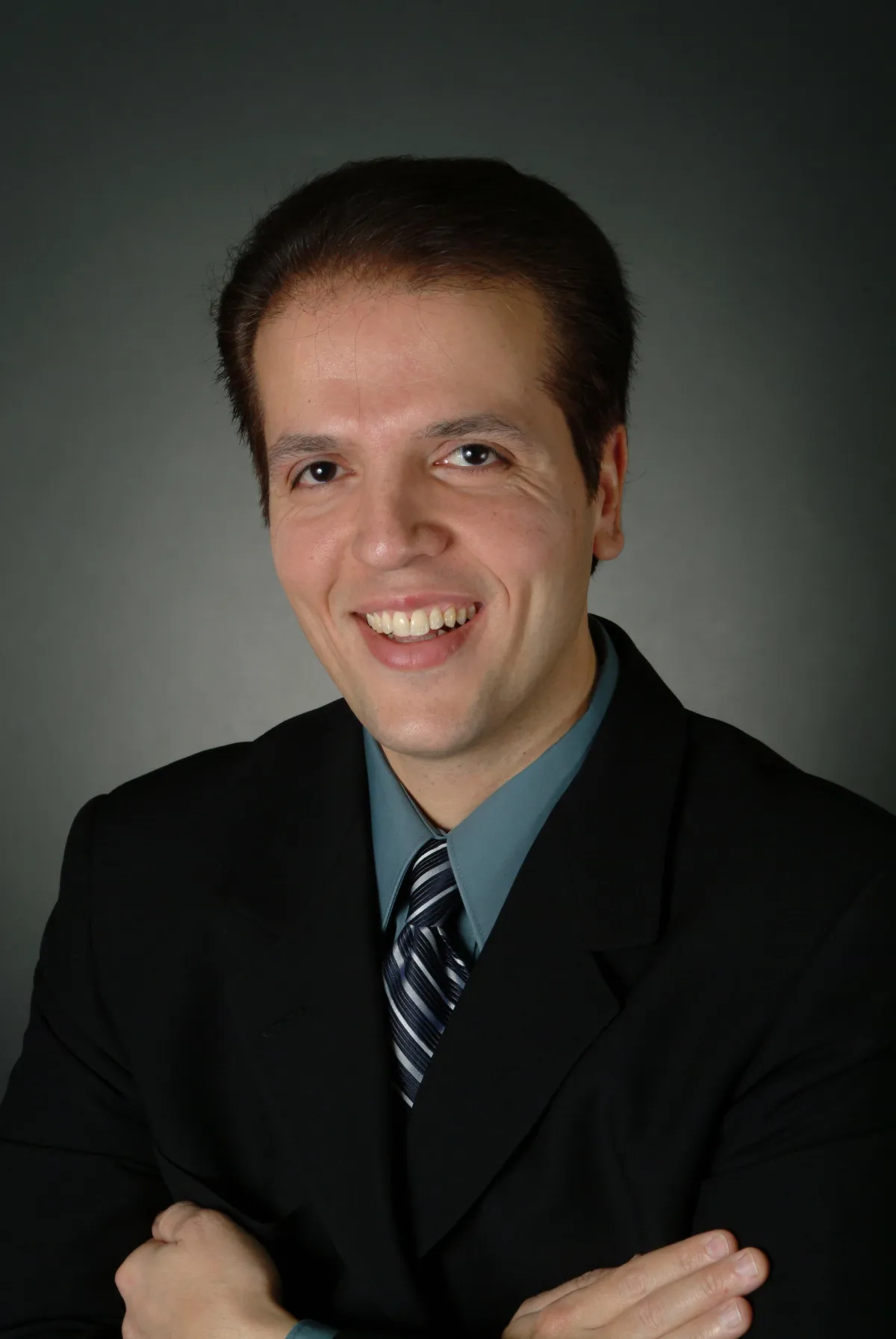Our Communities

Toronto
Economy
Toronto is an international centre for business and finance. Generally considered the financial capital of Canada, Toronto has a high concentration of banks and brokerage firms on Bay Street, in the Financial District. The Toronto Stock Exchange is the world’s seventh-largest stock exchange by market capitalization. The five largest financial institutions of Canada, collectively known as the Big Five, have national offices in Toronto.
The city is an important centre for the media, publishing, telecommunication, information technology and film production industries; it is home to Bell Media, Rogers Communications, and Torstar. Other prominent Canadian corporations in the Greater Toronto Area include Magna International, Celestica, Manulife Financial, Sun Life Financial, the Hudson’s Bay Company, and major hotel companies and operators, such as Four Seasons Hotels and Fairmont Hotels and Resorts.
Although much of the region’s manufacturing activities take place outside the city limits, Toronto continues to be a wholesale and distribution point for the industrial sector. The city’s strategic position along the Quebec City – Windsor Corridor and its road and rail connections help support the nearby production of motor vehicles, iron, steel, food, machinery, chemicals and paper. The completion of the Saint Lawrence Seaway in 1959 gave ships access to the Great Lakes from the Atlantic Ocean.
The city’s net debt stood at $4.4 billion as of the end of 2010 and has a AA credit rating. Toronto is expected to pay $400 million of the debt in 2011. The city’s debt increased by $721 million in 2010. The city’s unemployment rate was 8.1% in November 2011, down from 8.3% year over year.The cost of living in Toronto was ranked highest in Canada in 2011.
Demographics
Developed in the early 1900s, Little Italy is one of the city’s oldest extant ethnic neighbourhoods.
The city’s population grew by 4% (96,073 residents) between 1996 and 2001, 1% (21,787 residents) between 2001 and 2006, and 4.3% (111,779 residents) between 2006 and 2011. Persons aged 14 years and under made up 17.5% of the population, and those aged 65 years and over made up 13.6%. The median age was 36.9 years. Foreign-born people made up 49.9% of the population. The city’s gender population is 48% male and 52% female. Women outnumber men in all age groups over 20. As of 2011, 49.1% of the residents of the city proper belong to a visible minority group, and visible minorities are projected to comprise a majority in the Toronto CMA by 2017 In 1981, Toronto’s visible minority population was 13.6%.
According to the United Nations Development Programme, Toronto has the second-highest percentage of constant foreign-born population among world cities, after Miami, Florida. While Miami’s foreign-born population consists mostly of Cubans and other Latin Americans, no single nationality or culture dominates Toronto’s immigrant population, placing it among the most diverse cities in the world. By 2031, Toronto’s current visible minority population will have increased to 63%, changing the definition of visible minority in the city. More than 100,000 immigrants arrive in the Toronto area every year.
In the 2011 Canadian census, the most common ethnic origins in the city of Toronto were as follows:
Source: 2011 NHS Profile
Toronto is a racially diverse city, the racial make up is:
50.2% White
12.7% East Asian; 10.8% Chinese, 1.4% Korean, 0.5% Japanese
12.3% South Asian
8.5% Black
7.0% Southeast Asian; 5.1% Filipino
2.8% Latin American
2.0% West Asian
1.1% Arab
0.7% Aboriginal; 0.5% First Nations, 0.2% Metis
1.5% Multiracial; 1.7% including Metis
1.3% Other
This diversity is reflected in Toronto’s ethnic neighbourhoods, which include Chinatown, Corso Italia, Greektown, Kensington Market, Koreatown, Little India, Little Italy, Little Jamaica, Little Portugal and Roncesvalles.
In 2011, the most commonly reported religion in Toronto was Christianity, with 54.1% of the population adhering to this group. The census reports that 28.2% of the city’s population is Catholic, followed by Protestant (11.9%), Christian Orthodox at (4.3%), and other Christian denominations (9.7%). With the city’s significant number of Methodist Christians, Toronto was sometimes referred to as the Methodist Rome. Other religions in the city are Islam (8.2%), Hinduism (5.6%), Judaism (3.8%), Buddhism (2.7%), and Sikhism (0.8%). Those with no religious affiliation made up 24.2% of Toronto’s population.
While English is the predominant language spoken by Torontonians, many other languages have considerable numbers of local speakers.[72] The varieties of Chinese and Italian are the second and third most widely spoken languages at work. As a result, the city’s 9-1-1 emergency services are equipped to respond in over 150 languages.
Government
Toronto is a single-tier municipality governed by a mayor–council system. The structure of the municipal government is stipulated by the City of Toronto Act. The Mayor of Toronto is elected by direct popular vote to serve as the chief executive of the city. The Toronto City Council is a unicameral legislative body, comprising 44 councillors representing geographical wards throughout the city. The mayor and members of the city council serve four-year terms without term limits. (Until the 2006 municipal election, the mayor and city councillors served three-year terms.) However, on November 18, 2013, council voted to modify the city’s government by transferring many executive powers from mayor Rob Ford to the deputy mayor, Norm Kelly, and itself.
At the start of the 2007 term, the city council will have seven standing committees, each consisting of a Chairman, a vice-chair and four other councillors. The Mayor names the committee chairs and the remaining membership of the committees is appointed by City Council.[77] An executive committee is formed by the chairs of each of standing committee, along with the mayor, the deputy mayor and four other councillors. Councillors are also appointed to oversee the Toronto Transit Commission and the Toronto Police Services Board.
The city has four community councils that consider local matters. City Council has delegated final decision-making authority on local, routine matters, while others—like planning and zoning issues—are recommended to the city council. Each city councillor serves as a member on a community council.
There are about 40 subcommittees and advisory committees appointed by the city council. These bodies are made up of city councillors and private citizen volunteers. Examples include the Pedestrian Committee, Waste Diversion Task Force 2010, and the Task Force to Bring Back the Don.
Toronto had an operating budget of C$7.6 billion in 2006. The city receives funding from the Government of Ontario in addition to tax revenues and user fees, spending 36% on provincially mandated programmes, 53% on major municipal purposes such as the Toronto Public Library and the Toronto Zoo, and 11% on capital financing and non-programme expenditures.
Crime
Main article: Crime in Toronto
See also: Crime in Canada and Gun politics in Canada
The low crime rate in Toronto has resulted in the city having a reputation as one of the safest major cities in North America.For instance, in 2007, the homicide rate for Toronto was 3.3 per 100,000 people, compared with Atlanta (19.7), Boston (10.3), Los Angeles (10.0), New York City (6.3), Vancouver (3.1), and Montreal (2.6). Toronto’s robbery rate also ranks low, with 207.1 robberies per 100,000 people, compared with Los Angeles (348.5), Vancouver (266.2), New York City (265.9), and Montreal (235.3). Toronto has a comparable rate of car theft to various U.S. cities, although it is not among the highest in Canada.
Toronto recorded its largest number of homicides in 1991 with 89, a rate of 3.9 per 100,000. In 2005, Toronto media coined the term “Year of the Gun”, because there was a record number of gun-related homicides, 52, out of 80 homicides in total.[83][92] The total number of homicides dropped to 70 in 2006, that year, nearly 2,000 people in Toronto were victims of a violent gun-related crime, about one-quarter of the national total. 84 homicides were committed in 2007, roughly half of them involved guns. Gang-related incidents have also been on the rise; between the years of 1997 and 2005, over 300 gang-related homicides have occurred. As a result, the Ontario government developed an anti-gun strategy. In 2011, Toronto’s murder rate plummeted to 45 murders—nearly a 26% drop from the previous year. The 45 homicides were the lowest number the city has recorded since 1986.
Education
Toronto has a number of post-secondary academic institutions. The University of Toronto, established in 1827 and is Canada’s largest university, has two satellite campuses, one of which is located in the city’s eastern district of Scarborough while the other is located in the neighbouring city of Mississauga. York University, Canada’s third-largest university founded in 1959, is located in the northwest part of the city. Toronto is also home to Ryerson University, OCAD University, and the University of Guelph-Humber.
There are four diploma and degree granting colleges in Toronto. These are Seneca College, Humber College, Centennial College and George Brown College. The city is also home to a satellite campus of the francophone Collège Boréal.
The Royal Conservatory of Music, which includes the Glenn Gould School, is a school of music located downtown. The Canadian Film Centre is a film, television and new media training institute founded by filmmaker Norman Jewison. Tyndale University College and Seminary is a Christian post-secondary institution and Canada’s largest seminary.
The Toronto District School Board (TDSB) operates 558 public schools. Of these, 451 are elementary and 102 are secondary (high) schools. Additionally, the Toronto Catholic District School Board manages the city’s publicly funded Roman Catholic schools, while the Conseil scolaire de district du Centre-Sud-Ouest and the Conseil scolaire de district catholique Centre-Sud manages public and Roman Catholic French-language schools, respectively. There are also numerous private university-preparatory schools.
The Toronto Public Libraryconsists of 99 branches with more than 11 million items in its collection.
Infrastructure
Health and medicine
Toronto is home to 20 public hospitals, including the Hospital for Sick Children, Mount Sinai Hospital, St. Michael’s Hospital, North York General Hospital, Toronto General Hospital, Toronto Western Hospital, St. Joseph’s Health Centre, Rouge Valley Health System, The Scarborough Hospital, Sunnybrook Health Sciences Centre, Centre for Addiction and Mental Health (CAMH), and Princess Margaret Cancer Centre, as well as the University of Toronto Faculty of Medicine.
Several years ago, Toronto was reported as having some of the longer average ER wait times in Ontario. Toronto hospitals at the time employed a system of triage to ensure life-threatening injuries receive rapid treatment. After initial screening, initial assessments by physicians were completed within the waiting rooms themselves for greater efficiency, within a median of 1.2 hours. Tests, consultations, and initial treatments were also provided within waiting rooms. 50% of patients waited 4 hours before being transferred from the emergency room to another room. The least-urgent 10% of cases wait over 12 hours. The extended waiting-room times experienced by some patients were attributed to an overall shortage of acute care beds.
Toronto’s Discovery Districtis a centre of research in biomedicine. It is located on a 2.5-square-kilometre (620-acre) research park that is integrated into Toronto’s downtown core. It is also home to the Medical and Related Sciences Centre (MaRS),which was created in 2000 to capitalize on the research and innovation strength of the Province of Ontario. Another institute is the McLaughlin Centre for Molecular Medicine (MCMM).
Toronto also has some specialized hospitals located outside of the downtown core. These hospitals include Baycrest for geriatric care and Holland Bloorview Kids Rehabilitation Hospital for children with disabilities.
Toronto is also host to a wide variety of health-focused non-profit organizations that work to address specific illnesses for Toronto, Ontario and Canadian residents. Organizations include The Crohn’s and Colitis Foundation of Canada, the Heart and Stroke Foundation, the Canadian Cancer Society, the Alzheimer Society of Canada, Alzheimer Society of Ontario and Alzheimer Society of Toronto, all situated in the same office at Yonge and Eglinton, the Leukemia & Lymphoma Society of Canada, the Canadian Breast Cancer Foundation, the Canadian Foundation for AIDS Research, Cystic Fibrosis Canada, the Canadian Mental Health Association, the ALS Society of Canada and many others. The organizations work to help people within the GTA, Ontario or Canada who are affected by these illnesses. As well, most engage in fundraising to promote research, services and public awareness.
Transportation
Toronto’s public transportation system is operated by the Toronto Transit Commission (TTC). The backbone of its public transport network is the Toronto subway and RT, which includes three heavy-rail rapid transit lines and a mainly elevated light-metro rapid transit line that runs in Scarborough. The TTC also operates a network of buses and streetcars. There have been numerous plans to extend the subway and implement light-rail lines, but many efforts have been thwarted by budgetary concerns. Since July 2011, the only subway-related work is the Spadina subway extension north of Downsview Station.
The Government of Ontario also operates an interregional rail and bus transit system called GO Transit in the Greater Toronto Area. GO Transit carries over 217,000 passengers every weekday and 57 million annually, with a majority of them travelling to or from Union Station.
Canada’s busiest airport, Toronto Pearson International Airport (IATA: YYZ), straddles the city’s western boundary with the suburban city of Mississauga. Limited commercial and passenger service is also offered from the Billy Bishop Toronto City Airport, on the Toronto Islands, southwest of downtown. Toronto/Buttonville Municipal Airport in Markham provides general aviation facilities. Toronto/Downsview Airport, near the city’s north end, is owned by de Havilland Canada and serves the Bombardier Aerospace aircraft factory.
There are a number of municipal expressways and provincial highways that serve Toronto and the Greater Toronto Area. In particular, Highway 401 bisects the city from west to east, bypassing the downtown core. It is the busiest road in North America, and one of the busiest highways in the world. The main municipal expressways in Toronto include the Gardiner Expressway, the Don Valley Parkway, and to some extent, Allen Road. The Greater Toronto Area suffers from chronic traffic congestion problems, and Toronto has the second worst traffic congestion in Canada after Vancouver.
The grid of major city streets was laid out by a concession road system, in which major arterial roads are 6,600 ft (2.0 km) apart (with some exceptions, particularly in Scarborough and Etobicoke, as they were originally separate townships). Major east-west arterial roads are generally parallel with the Lake Ontario shoreline, and major north-south arterial roads are roughly perpendicular to the shoreline, though slightly angled north of Eglinton Avenue. This arrangement is sometimes broken by geographical accidents, most notably the Don River ravines.
All information about Toronto courtesy of Wikipedia.




